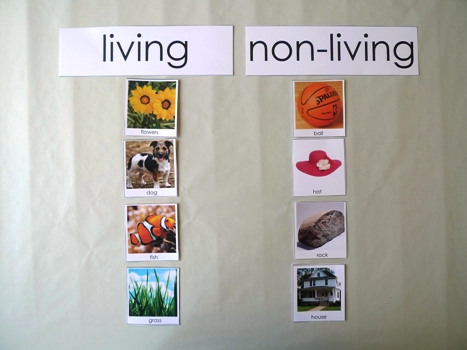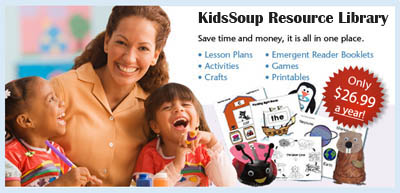The importance of instilling the concept of...

Children explore what it means to be a living thing versus a nonliving thing in this introduction to flowers and what they need to survive.

Place a potted flower where all children can see it. Ask:
Write children’s responses on chart paper. Add any characteristics of living things that are left out. Emphasize a flower is a living thing because
To reinforce these concepts, teach children the following rhyme and fingerplay:
Planting Flowers
Original Author Unknown
First, you take the seed and you plant it in the ground. (Use the fingers of one hand to pretend to plant a seed in the palm of the other hand.)
Next, a rain cloud comes and waters all around. (Wiggle fingers of both hands downward to pantomime rain,)
Then, the sun shines brightly, without a sound. (Form fist and move it in a circlular motion.)
And in just a few days, a flower is found. (Open up fist to pantomime a flower blooming.)
Print and cut out the Living and Nonliving Things Cards and Labels (KidsSoup members only). Place the Living and Non-living labels in a pocket chart to designate two columns. Place the picture cards in a basket. Pull one card from the basket at a time and show it to children. Let children decide if the object would be considered a living or non-living thing. Ask children questions to help them draw their conclusions:

Let children talk over their answer. Once a conclusion has been formed, place the picture in either the living or the non-living column of the pocket chart.
Once children are familiar with the activity, they can use the pocket chart and cards individually or in pairs to sort the pictures.
Take children on a walk in the park, a garden, or neighborhood. Have them look for and point out examples of living and non-living things. Ask questions along the way such as
KidsSoup Resource Library
